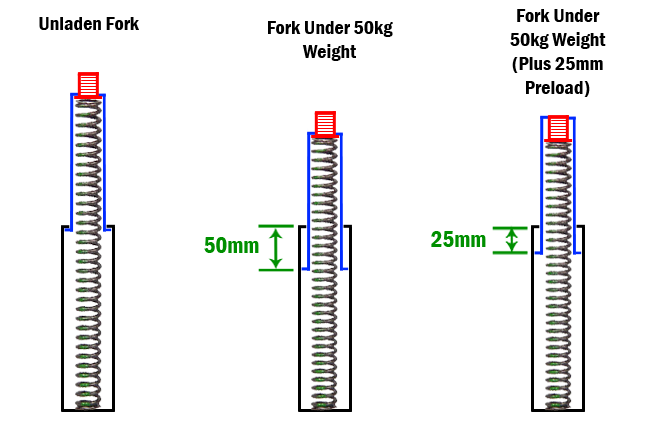ssaulnier
Silver Level Site Supporter
I took my new 2018 300EC out for a ride this weekend on tacky dirt, mud and sand. Bike worked great but I could feel the front end pushing toward the outside of the turns and trying to plow straight ahead a little more than I like. Sliding forward on the seat helped plant the front tire a little, but not enough.
She now has 3 hours on her, so still early days. Still looks like new... very sexy beast. I see lust in the hearts of the KTM/Honda/Yamaha riders!
Stock jets 42 pj, 172 MJ with replacement Suzuki NEDH needle Top clip running very smoothly at 50 to 70 degrees F until the power valve opens and then she rockets off a bit too hard whilst in the trees and makes my butt pucker. Have not checked the power valve setting yet but might tame her a bit before I eat some tree bark.
Please advise your thoughts on best ways to increase front wheel traction from list below or add your own thoughts. I weight about 220 lbs suited up for riding.
Ideas to Improve Front Tire Cornering Traction.
1. Rear static sag was 45 mm as delivered (rider sag 112 mm in street clothes 200 lbs). I increased the spring preload as much as I could with my hands, but it wasn't even a full turn. Static sag with added preload is now 35 mm (manual spec is 35 +/- 5 mm) and rider sag with full gear is 120 mm (spec is 100 +/- 5 mm). So the rear end is riding too low and taking weight off the front wheel.
2. Presently running stock Metzler 6 days FIM front tire at 8 psi. Reduce pressure or replace with Bridgestone M59 or Shinko MX216 90/90x21?
3. Set forks to comfort settings recommended in manual for compression at 18 click out. But may not have turned the rebound out that far to match. Need to check.
4. Front forks height in the triple clamps are unchanged. I have not changed them and don't recall where they are. Perhaps raising the fork tubes in the clamps will put more weight on the front end, but also make it harder to adjust the fork top compression clickers. Think I should reduce the rear sag first.
Thanks for your advice.
Cheers, Steve
She now has 3 hours on her, so still early days. Still looks like new... very sexy beast. I see lust in the hearts of the KTM/Honda/Yamaha riders!
Stock jets 42 pj, 172 MJ with replacement Suzuki NEDH needle Top clip running very smoothly at 50 to 70 degrees F until the power valve opens and then she rockets off a bit too hard whilst in the trees and makes my butt pucker. Have not checked the power valve setting yet but might tame her a bit before I eat some tree bark.
Please advise your thoughts on best ways to increase front wheel traction from list below or add your own thoughts. I weight about 220 lbs suited up for riding.
Ideas to Improve Front Tire Cornering Traction.
1. Rear static sag was 45 mm as delivered (rider sag 112 mm in street clothes 200 lbs). I increased the spring preload as much as I could with my hands, but it wasn't even a full turn. Static sag with added preload is now 35 mm (manual spec is 35 +/- 5 mm) and rider sag with full gear is 120 mm (spec is 100 +/- 5 mm). So the rear end is riding too low and taking weight off the front wheel.
2. Presently running stock Metzler 6 days FIM front tire at 8 psi. Reduce pressure or replace with Bridgestone M59 or Shinko MX216 90/90x21?
3. Set forks to comfort settings recommended in manual for compression at 18 click out. But may not have turned the rebound out that far to match. Need to check.
4. Front forks height in the triple clamps are unchanged. I have not changed them and don't recall where they are. Perhaps raising the fork tubes in the clamps will put more weight on the front end, but also make it harder to adjust the fork top compression clickers. Think I should reduce the rear sag first.
Thanks for your advice.
Cheers, Steve
Last edited:

